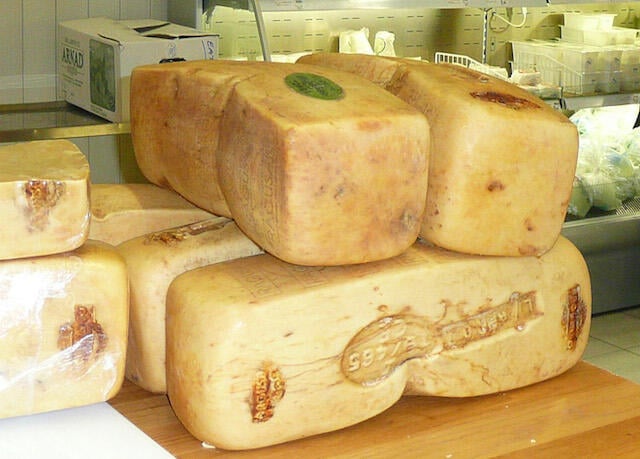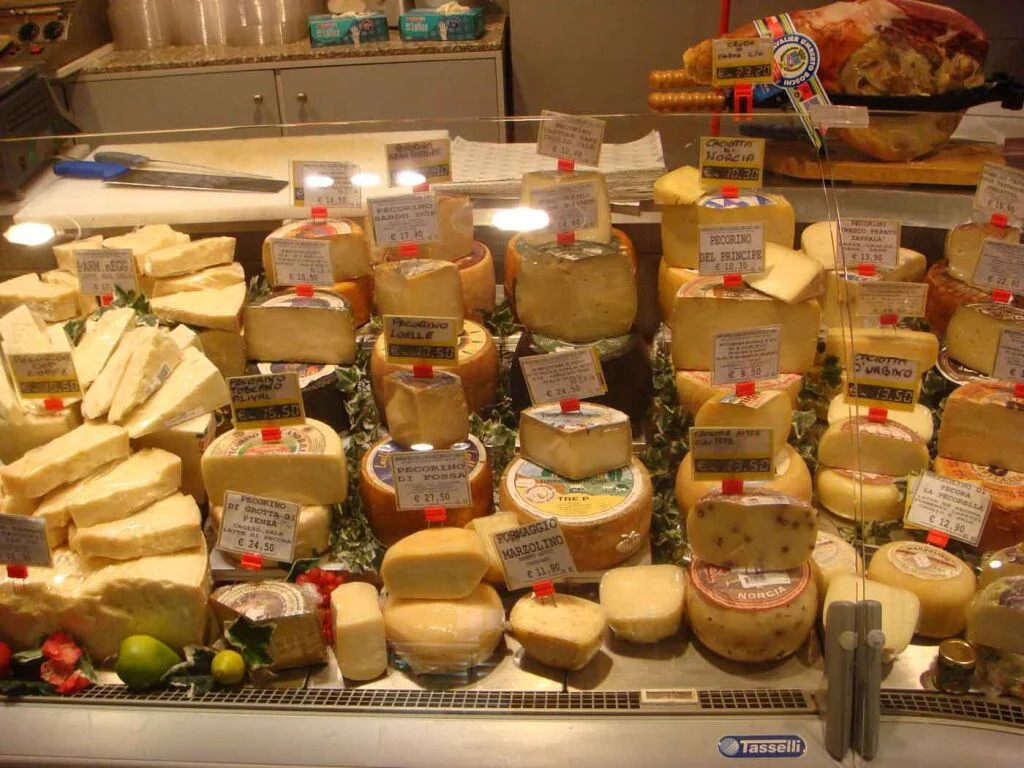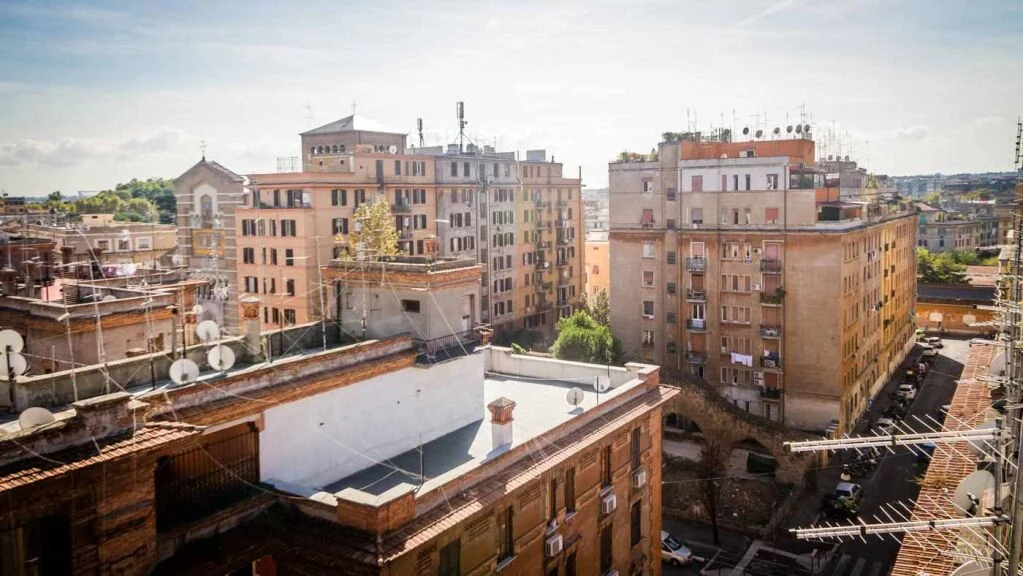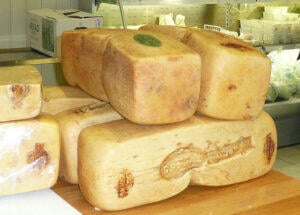
Just like seafood, olive oil, and nuts, cheese plays a starring role in Sicilian cuisine. Sicily is a true foodie mecca, but cheese isn’t necessarily something that many of us associate with the island’s culinary traditions.
However, if you’ve been on one of my Palermo food tours, you’ll know that Sicilian cheese is exquisite, and it’s something the locals take very seriously. The varied terrains and agricultural heritage have influenced Sicily’s approach to cheese-making, resulting in mouthwatering varieties of pecorino, caciocavallo, and ragusano.
I’ve put together this guide to the finest Sicilian cheeses you have to try and the perfect accompaniments to pair them with.
Exploring the Unique Flavors of Sicilian Cheese
Sicilian cheeses are much more varied than you might think. There’s mild, soft ricotta that’s a key feature in both sweet and savory dishes, but there are also sharp, pungent, hard cheeses like pecorino and canestrato.
In essence, there’s a cheese for every kind of palate, and the locals’ ability to utilize them in dozens of inventive ways is what makes Sicilian cuisine so remarkable. Pasta alla norma, arancini, cannoli, and sfincione; the list of cheese-infused delicacies in Sicily is pretty extensive!
Despite how well most of these cheeses work in countless recipes, they’re also a delight for the taste buds on their own. More often than not, some crostini, dried fruits, or a glass of wine are all you need.
Must-Try Sicilian Cheeses
Pecorino Siciliano
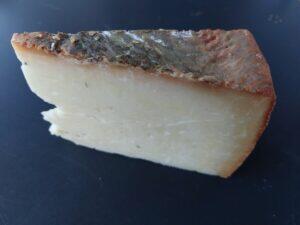
Pecorino Siciliano is a semi-hard cheese made from sheep’s milk. It’s produced all over Sicily, including Palermo, Agrigento, and Trapani. Despite its fruity notes, it’s a strong, herbaceous cheese.
It’s made by collecting raw ewe’s milk into wooden vats before animal rennets are added, and the mixture is dissolved in warm water.
While tasty on its own, pecorino Siciliano works particularly well when grated on pasta or with sweet jams or honey.
Caciocavallo Ragusano
Caciocavallo Ragusano is a Modicana cow’s milk cheese that’s soft when young and hard when aged. It usually has a sweet yet spicy taste and comes from the hilly southern city of Ragusa.
First, the milk is curdled with lamb rennet. Once the curd is broken, it’s cooked with water at a high temperature. The cheese is then pressed, covered, and rested before being salted and left to mature in a ventilated area.
This is a cheese that is terrific on its own or with tomato-based pasta.
Ricotta
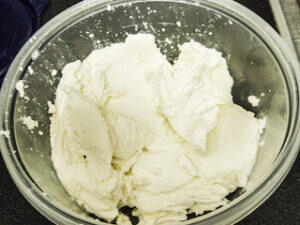
A cheese that’s ingrained in Sicilian culture, ricotta is a mild, soft whey cheese made from the remnants of pecorino. It’s produced in various regions in Sicily, but Vizzini and Trapani are synonymous with ricotta.
The leftover whey from pecorino production is collected and heated until it’s close to boiling point. At this point, citric acid is added, and the curds are drained before cooling.
Ricotta is a fundamental component of Sicilian cuisine and is heavily featured in pasta dishes and desserts like cannoli and cassata.
Provola dei Nebrodi
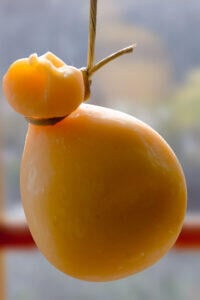
Provola dei Nebrodi is a stretched curd cheese made from raw cow’s milk from the Messina region. When aged, its grassy, delicate flavors intensify and become more robust.
This cheese is made using wooden equipment, and the production process starts with the curdling of fresh milk. During this step, the bacteria in the milk will convert the lactose into lactic acid, making the cheese stretchier and ready to be molded.
Although often enjoyed on its own or with a dessert wine, it also adds some flair when grated on pasta.
Primo Sale
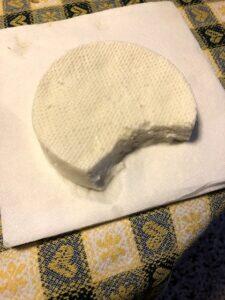
Primo sale is a soft salted Sicilian cheese variety made from sheep’s milk. Numerous regions in Sicily produce primo sale, but this nutty, tangy cheese is most closely associated with the Valle del Belice.
The cheese-making process begins when the milk is gently heated and combined with salt and a touch of animal rennet. When the curds settle, they’re moved into molds, and the whey is drained.
This versatile cheese is delightful as a table cheese but also with pasta or meat dishes.
Canestrato
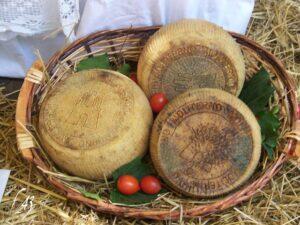
Canestrato is reminiscent of pecorino, but this hard cheese often uses cow’s milk rather than strictly that of a sheep and has slightly sweeter, spicier tones.
The manufacturing methods are also similar, but canestrato is generally made with steel equipment. Sheep rennet is fused with the milk, and the ingredients are cooked in warm water until the mixture thickens.
In Sicily, canestrato is typically consumed alongside fruits, honey, and marmalades.
Pairing Sicilian Cheeses with Local Wines

A glass of wine is the ultimate accompaniment to any cheese. Fortunately, Sicily produces superb varieties of both, meaning you’ll have some stellar combinations to choose from.
Below, I’ve broken down some of my favorite pairings that I’ve savored over the years.
Pecorino – Cerasuolo di Vittoria DOCG is a dry, full-bodied red with punchy notes of red fruit and subtle hints of black pepper. Its strong flavors and acidity stand up to the pecorino’s strong taste.
Caciocavallo Ragusano – Caciocavallo Ragusano is among the most popular Sicilian cheeses, and it pairs beautifully with one of its most esteemed wines, Nero d’Avola. The wine’s bold, fruity flavors complement the fragrant, piquant nature of the cheese.
Ricotta – Orvieto Classico is a fresh, dry white with a crisp finish, and its delicate nutty notes counter the ricotta’s delicate flavors.
Provola dei Nebrodi – Passito di Noto is often my first choice when it comes to provola. This dessert white wine has sweet citrus notes and a hint of candied fruits that balance the savory cheese.
Primo Sale – A light-bodied red like Frappato always goes down a treat with primo sale, as both have earthy yet refreshing undertones.
Canestrato – Canestrato has a deeply intense, savory flavor palette, so a Nero d’Avola rosé will help lighten these notes with its berry and citrus tones.
Conclusion
If Sicilian cheese wasn’t on your radar before, I’m hopeful it is now! The varieties of cheese produced on the island could rival those in any other corner of the country, and they’re a reflection of Sicily’s delicious and diverse cuisine.
Sources:
Eating Europe. (n.d.). Palermo food tour: Discover the authentic flavors of Palermo’s street food. Eating Europe. Retrieved December 12, 2024, from https://www.eatingeurope.com/palermo/
Sicilian Food: Best of Sicily. (n.d.). Palermo food: An introduction to the local cuisine. Best of Sicily. Retrieved December 12, 2024, from http://www.bestofsicily.com/mag/art87.htm

